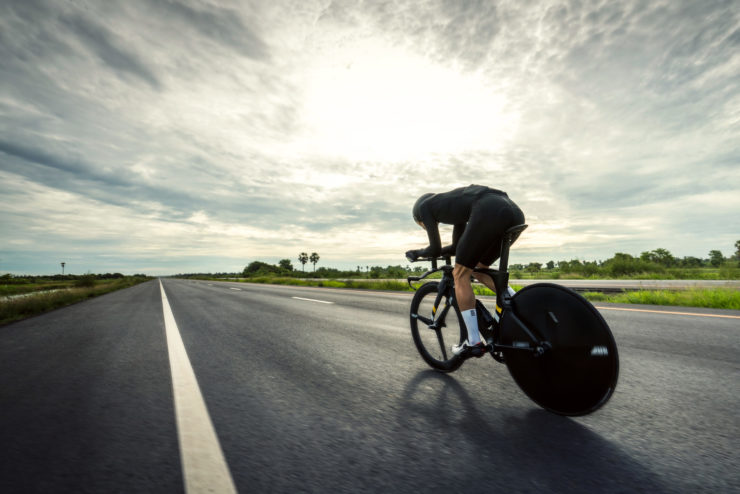ATC 314: Top Workouts to Improve Threshold, How To Structure a Base Phase, and Finding A Compatible Coach
July 3, 2020
Sponsor:
 You hear us talk about UCAN all the time. Many of our athletes and listeners swear by it. How about you? Maybe you’re ready to try UCAN but don’t know where to start? We have the perfect solution: Click here to get more than 50% off your UCAN Tri Starter pack. The Tri Starter Pack includes a sample of all the best UCAN products for just $15, normally $30. This deal is exclusive to our EP audience and not offered to the general public. It won’t last forever so take advantage while it’s here! And for all your regular UCAN shopping: EP fans get 15% off UCAN, just click the UCAN link to activate the discount or use code “enduranceplanet19” if you’re shopping at generationucan.com for that same 15% discount.
You hear us talk about UCAN all the time. Many of our athletes and listeners swear by it. How about you? Maybe you’re ready to try UCAN but don’t know where to start? We have the perfect solution: Click here to get more than 50% off your UCAN Tri Starter pack. The Tri Starter Pack includes a sample of all the best UCAN products for just $15, normally $30. This deal is exclusive to our EP audience and not offered to the general public. It won’t last forever so take advantage while it’s here! And for all your regular UCAN shopping: EP fans get 15% off UCAN, just click the UCAN link to activate the discount or use code “enduranceplanet19” if you’re shopping at generationucan.com for that same 15% discount.
Intro Discussion
- Dopamine and screen time: learn more from Lucho on his Twitch. Tips on how to guide your child’s athleticism and development.
Josh asks:
Programming a triathlon base phase
What the Coaches Say:
- It absolutely does depend on a number of factors: age, past training, durability, etc.
- Joel Friel’s 12-week base period is often helpful. Consists of polarized base 1, 2, and 3.
- You could do 30 weeks of base if you wanted, but watch out for stagnation and plateau.
- Begin with the least specific and as you approach your race the training gets more specific.
- Look at this base period as HR based or power based. Don’t get wrapped up on pace.
- Don’t think about FTP during the base period.
- If you say base phase training is your weakness, don’t put a time frame on it. You could easily do 8 weeks of base 1, another 8 of base 2, and another 8 of base 3.
- For the swim, focus on kick and drills.
- 90/10 or 95/5 approach is ok. The main goal should be to increase volume, not intensity.
- This is absolutely a time to work on strength training and functional fitness.
- The world is your oyster right now! You can do no wrong.
Marty asks:
My weakness is my LT–how do I increase it?
What the Coaches Say:
- There’s a possibility that your MAF is too high. Consider going more zone based.
- Is your endurance up to snuff? In order to develop a strong LT, you need to have endurance.
- What type of training have you been doing? If you’ve been doing a lot of intensity, step back and just do MAF for 6-8 weeks.
- Maybe the test was an off day. What other variables are at play?
- Assuming your MAF is correct and the LT test is correct, your LT is bad… as you know 🙂 LT should be more like 20-25 beats above MAF.
- Threshold workouts for run and bike are similar, though bike is more durational.
- You need to go into them rested and fueled (with carbs), then rest after them because they’re fatiguing.
- Best bike: 2 x 20 minutes steady state LT (advanced!)
- Start with: 2 x 10 FTP, 3 x 15, 3 x 20, then up to 2 x 20. 1 minute rest in between intervals, but take as long as you need to hit the target.
- If you need an even more gradual entryway: 4 x 5 min.
- “In n outs” for 20 minutes can also be helpful, as it engages your brain.
- You can do the same for the run.
- Mile repeats on the run at 10 seconds faster than LT pace is ok, but all-out sprints isn’t as helpful.
Megan asks:
How to go about researching for a new coach?
What the Coaches Say:
- Start with the methodology. If you’re a fan of MAF, find someone who is already using MAF or is willing to incorporate it into their approach.
- Of course, this is difficult. There’s no database of coaches and their philosophies.
- Don’t settle for someone who says it’s “my way or the highway.” You want a coach who’s flexible and can adapt to your needs.
- You clearly have a lot of motivation and the potential to push yourself over the edge. You need someone who can rein you in.
- You’ll want a coach who will monitor your recovery (whether that’s quantitative or qualitative is up to you).
- You want a coach who will give you what you need: you don’t need a cheerleader. You want a legit guide.
- Start stalking people on social media! This includes coaches and athletes. Put out feelers from there.
- Ask local running clubs (online for now).
- If there’s a big-time coach you like, see which coaches follow/engage with them on social media.
- Before committing to a coach, see if you can do a 15-minute phone call or a short email exchange. You want to make sure it’s a good fit.

Add your thoughts